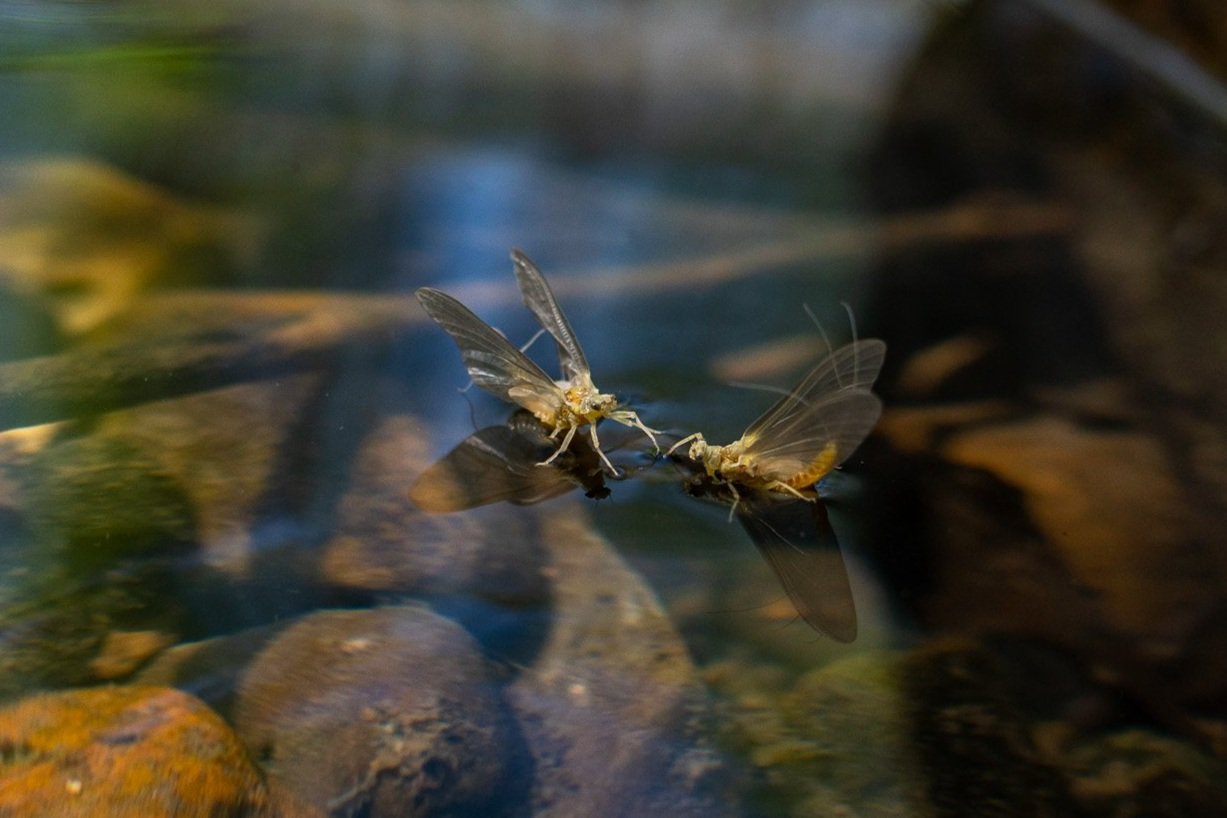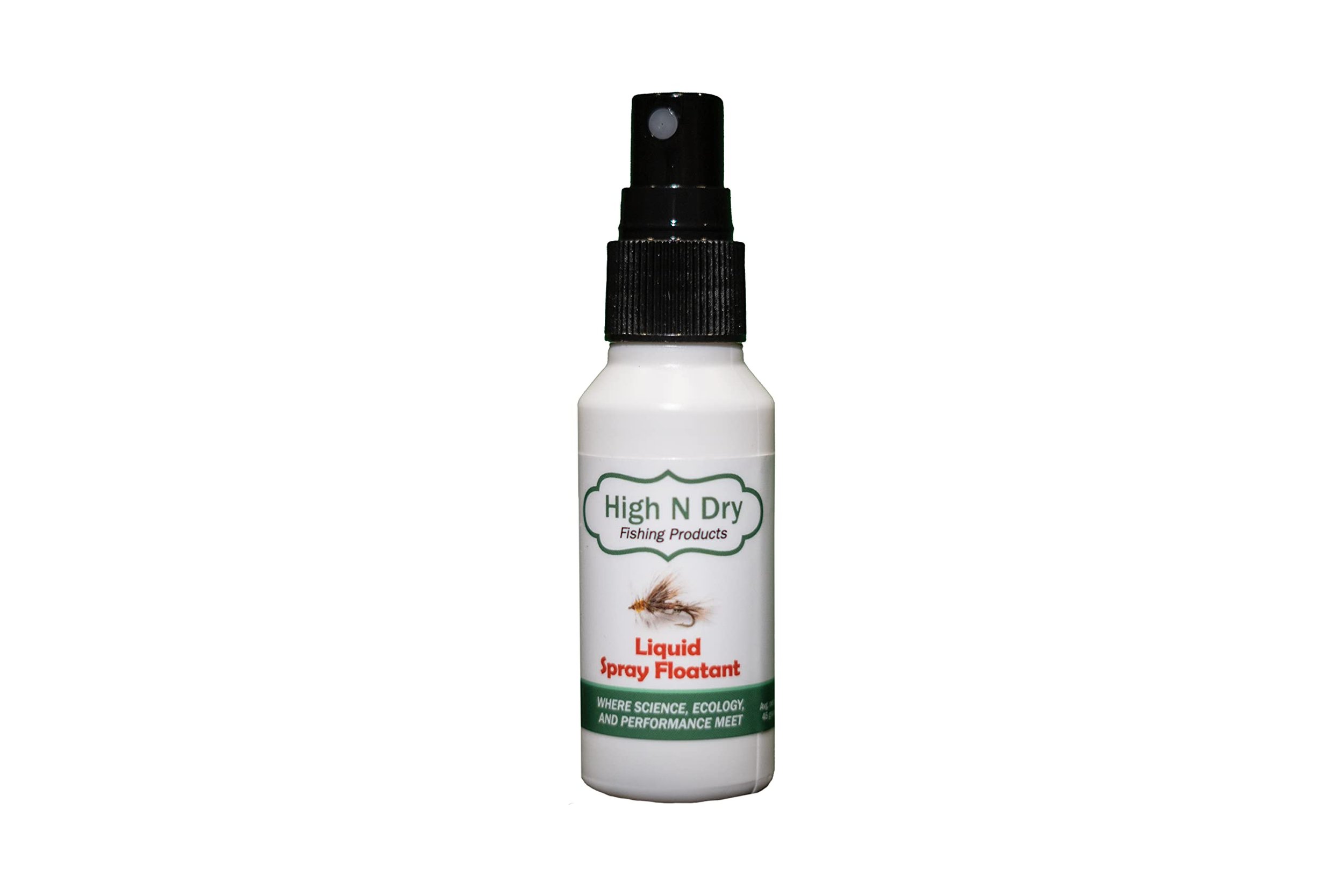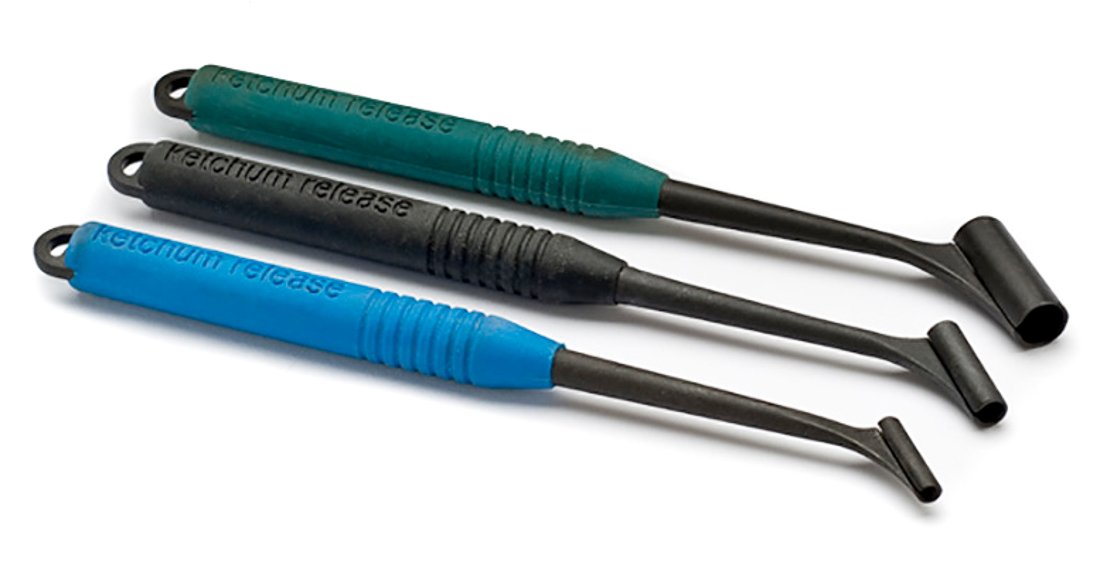Poetry in motion for fly fishers is watching a trout rise to a dry fly. This visual aspect of fly fishing is a style many prefer, especially apparent by the number of anglers that chase epic bug emergences like blanket caddisfly hatches on Montana’s Missouri River, the Hex mayfly in Michigan, and Penn Creek’s Green Drake hatch in central Pennsylvania. The simple approach is to show up and fish, yet the following pieces of gear will increase the number of fish you catch, plus make for a more enjoyable experience.
High N Dry Spray Floatant
There is nothing worse than a sinking dry fly when the fish want it floating like a cork. As a fly tier, I prefer to match the hatch with my own designs at the vise. Once finished tying dry flies, I submerge them in a container of this floatant, which soaks into the dry fly materials. Dab them dry in the morning with a paper towel, and the flies are nearly waterproof! Don’t tie your own flies? No worries, get a container of High N Dry and pretreat your dry flies before your next fly fishing outing.
SA Dry Fly Line
Though it may seem like you must be an engineer to understand today’s fly lines, Scientific Anglers made it simple for us. The fly line I’ve been using for trout over the last couple seasons is the SA Amplitude Textured Infinity. It’s a half-size heavy to help load today’s fast-action rods smoothly. Specifically for dry flies, the tip section is textured, helping it float better than other lines. If your fly line is not pulling your leader underwater, then your dry flies will float longer. Everyone is happy…well, maybe not the fish!
Ketchum Release Tool
Why is a catch-and-release tool on a list for dry fly gear? Once you’ve landed a trout on a dry fly, it’s time to take the fly out of its mouth. Many times, especially with smaller dry flies, this process can be difficult, forcing the angler to use hemostats. Using metal pliers on a dry fly is a sure way to ruin the fly, thus grab the standard size Ketchum Release for a quick release. My good friend, fly fishing legend Tom Baltz has been telling me about this tool for years. I’m now a believer, as this gets your fly back unharmed, while also getting fish back in the water quicker.
Rubber Band Trick
Once a dry fly begins to sink, many anglers will swap it out for a fresh one. This takes time, a hot commodity especially during a hatch. Instead, quickly dry the fly with the rubber band trick. Here’s how my process works:
1. Blot the fly with a handkerchief.
2. Attach the hook bend to a rubber band, then strum the band to flick away moisture.
3. Treat with your favorite floatant.
4. Catch a trout!
Devin Olsen of Tactical Fly Fishing shares some tricks to keep your CDC flies floating longer. The trick I like best is when Devin show how to use a rubber band or Life Flex legs to dry a fly!
Klinkhammer Hooks
If you tie your own flies, get some Hanak Klinkhammer hooks into your rotation. The aggressive bend on this hook style forces the fly’s trailing shuck and abdomen into the surface film, perfect to represent helpless emergers that trout key on. Scud hooks also work well in a pinch if you can’t find dedicated Klinkhammer hooks.
The Condor Substitute Emerger represents mayflies at their most vulnerable stage, emergence. Note how the Klinkhammer hook forces the rear of the fly into the water’s surface film. This fly is featured in my fly tying book, Fly Tying for Everyone.
By Tim Cammisa
I write about my experiences fly fishing and tying flies. A former fly fishing guide, I host a YouTube channel with over 5 million video views. When not chasing trout in Pennsylvania with my family, I host fly fishing trips to Iceland and Alaska. Author of Fly Tying for Everyone, it’s my goal to help others tie better flies, catch more fish, and have incredible experiences on the water.
If you click on links we provide, we may receive compensation.





